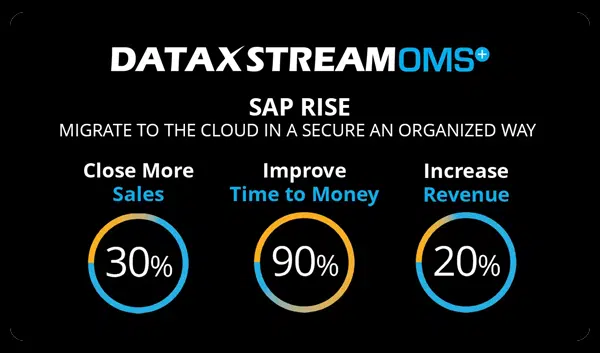Understanding Order Management Systems
Definition and purpose of an OMS
- An OMS is a digital tool used in ecommerce to track sales, orders, inventory, and fulfillment.
- An OMS streamlines the order processing cycle, from receipt of order to delivery, ensuring accuracy and efficiency.
Order Management System (OMS) platforms are revolutionizing e-commerce operations by providing a centralized solution for managing the entire order lifecycle. These platforms integrate with various sales channels, including online marketplaces, retail stores, and wholesale partners, allowing businesses to efficiently process and fulfill orders from multiple sources. Key features of OMS platforms include order routing, inventory synchronization, shipping integration, and real-time analytics. By implementing an OMS platform, e-commerce businesses can achieve greater visibility and control over their operations, improve order accuracy, and enhance overall efficiency.
Importance of an OMS in ecommerce and retail
- An OMS is crucial for maintaining customer satisfaction and operational effectiveness.
- It helps automate manual processes, reducing errors, saving time, and improving outputs, which can save and make retailers more money.
The Order Management Process
Receiving and processing orders
- An OMS tracks inventory levels by channel, automates the order fulfillment process, handles reverse logistics, manages customer information, and merges order and financial data.
Inventory allocation and management
- An OMS helps retailers manage and synchronize inventory across multiple locations.
- It updates inventory levels across all retail stores and fulfillment locations.
Order fulfillment and shipping
- An OMS automates the process of selecting the most expedient fulfillment method, resulting in faster delivery and more customer satisfaction.
- It integrates directly with top shipping carriers around the globe and pre-negotiates discounted shipping rates with carriers on behalf of the business.
Returns and reverse logistics
- An OMS helps brands avoid upsetting customers and provides a fuss-free returns experience.
- It automatically prints return labels in case a customer needs to send items back.
Post-order processing and analysis
- An OMS provides real-time updates on order status and shipping information.
- It helps businesses better forecast sales and manage inventory levels.
Inventory Management in OMS
Optimizing inventory for improved efficiency
- An OMS prevents human error and logistical nightmares.
- It improves customer experiences and helps businesses better forecast sales and manage inventory levels.
Benefits of Implementing an OMS
Higher revenues and profitability
- An OMS extends reach to multichannel shoppers, who spend 4 times as much as in-store customers and 10 times more than digital-only customers.
- It orchestrates consistent product information, availability, ordering information, post-purchase information, and returns information regardless of channel.
Improved customer satisfaction and loyalty
- An OMS helps businesses shorten fulfillment times, increase data security, and improve customer satisfaction.
- It directs orders for fulfillment to the optimal warehouse or store in the network.
Increased efficiency and reduced costs
- An OMS automates and streamlines customer touchpoints into a single lens of truth.
- It reduces errors, saves time, and improves outputs, which can save and make retailers more money.
Evaluating Order Management Solution Vendors
Key features and functionalities to consider
- Choose the right order management system by defining your objectives and priorities.
- Consider the features to look for in the platforms that make your shortlist.
Assessing compatibility with existing systems and tools
- An OMS must be integrated with other systems like ERP, CRM, or supply chain management tools.
- It must ensure seamless data flow.
Comparing OMS solutions and pricing
- Run each OMS vendor through a checklist to confirm you’re making the right decision.
- Check if they allow you to eliminate manual processes, manage sales across multiple channels, and provide real-time inventory updates.
Implementing an OMS: Best Practices
Defining objectives and priorities
- Define your objectives and priorities by holding a meeting with internal stakeholders.
- Factor in scalability and future thinking.
Developing a comprehensive implementation plan
- Provide vendors with technical requirements and limitations of the system you’re hoping to implement.
- Include details on how you expect the OMS to function, such as order volumes, number of SKUs, and existing software or hardware.
Training and onboarding staff and stakeholders
- Put together your shortlist and evaluate whether your options have the essential features your entire team needs.
- Ask vendors for guidance on implementing an OMS and be prepared for a transition period.
Overcoming Common Challenges
Scalability and flexibility in a growing business
- An OMS must be scalable and flexible.
- It must be able to handle increased order volumes, multi-currency transactions, and international shipping.
Customization and configuration to meet business needs
- An OMS must be customizable.
- It must be user-friendly.
Measuring OMS Success
Key performance indicators (KPIs) for OMS
- Measure the success of your OMS by tracking KPIs such as order fulfillment rates, shipping costs, and customer satisfaction.
Monitoring and analyzing OMS data and metrics
- Continuously monitor and analyze OMS data and metrics to identify areas for improvement.
- Use this data to optimize your OMS and improve business operations.
Continuously improving and optimizing the OMS
- Continuously improve and optimize your OMS to ensure it meets the changing needs of your business.
- Stay up-to-date with the latest trends and best practices in order management.
Order fulfillment software
Order fulfillment software is a critical component in the e-commerce ecosystem, enabling businesses to automate and streamline the end-to-end process of delivering goods to customers. This software is designed to manage and track orders from the moment they are placed until they reach the customer’s doorstep. The key features of order fulfillment software include order processing, inventory management, shipping coordination, and real-time updates on order status. By leveraging these capabilities, e-commerce businesses can ensure timely and accurate delivery, thereby improving customer satisfaction and loyalty.
E-commerce operations
E-commerce operations encompass all the activities involved in running an online business, from product listing and inventory management to order processing and customer service. Efficient e-commerce operations are essential for ensuring smooth and seamless transactions, which can lead to increased sales and customer retention. Key aspects of e-commerce operations include website management, payment processing, logistics and shipping, and after-sales support. By optimizing these areas, businesses can create a robust and scalable infrastructure that supports growth and enhances the overall shopping experience for customers.
Advanced inventory management
Advanced inventory management solutions are designed to help e-commerce businesses maintain optimal stock levels, reduce carrying costs, and minimize the risk of stockouts or overstock situations. These systems use sophisticated algorithms and real-time data to forecast demand, track inventory movements, and automate replenishment processes.
Key features of advanced inventory management solutions include barcode scanning, RFID technology, and integration with other business systems such as accounting and customer relationship management (CRM) software.
By implementing advanced inventory management practices, businesses can improve operational efficiency, reduce costs, and ensure that products are always available to meet customer demand.
Efficient customer service
Efficient customer service is a cornerstone of successful e-commerce operations, as it directly impacts customer satisfaction and retention. Providing timely and accurate responses to customer inquiries, resolving issues promptly, and offering personalized support are all essential components of excellent customer service.
To achieve this, businesses can utilize customer service software, which centralizes all customer interactions and provides tools for managing tickets, tracking issues, and measuring performance. Additionally, leveraging chatbots and AI-driven support can help streamline customer service processes and provide instant assistance, further enhancing the customer experience.
Inventory tracking solutions
Effective inventory tracking solutions are essential for maintaining accurate stock levels and ensuring that products are available when customers need them. These solutions utilize technologies such as barcode scanning, RFID, and IoT devices to track inventory movements in real-time and provide businesses with up-to-date information on stock levels.
Key benefits of inventory tracking solutions include improved inventory accuracy, reduced shrinkage, and enhanced ability to forecast demand. By implementing robust inventory tracking systems, e-commerce businesses can optimize their stock management processes, reduce costs, and increase customer satisfaction.
Improving inventory management
Improving inventory management is a critical aspect of optimizing e-commerce operations and ensuring business success.
To achieve this, businesses must adopt best practices such as implementing accurate forecasting and demand planning, utilizing advanced inventory management software, and regularly auditing stock levels.
Additionally, integrating inventory management systems with other business tools, such as OMS platforms and ERP software, can provide a holistic view of operations and enable better decision-making.
By continuously improving inventory management practices, e-commerce businesses can reduce costs, enhance efficiency, and provide a better customer experience.




